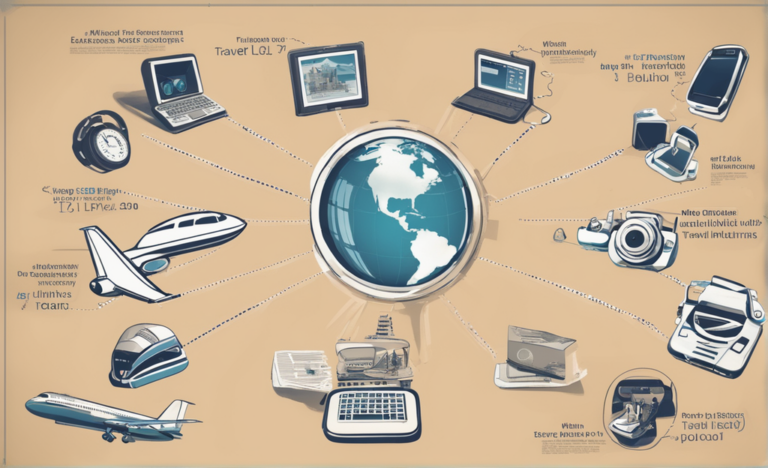The Future of Sustainable Travel Technology
In an era marked by an increasing awareness of environmental issues and a growing desire to reduce our carbon footprint, sustainable travel has emerged as a prominent trend. Travelers are seeking eco-conscious options that allow them to explore the world without harming the planet. Technology, as a powerful tool for innovation, is playing a pivotal role in shaping the future of sustainable travel. In this article, we will explore the evolving landscape of sustainable travel technology and how it’s reshaping the way we journey while preserving the Earth’s natural wonders.
Sustainable Travel: A Growing Imperative
Before we delve into the role of technology, it’s crucial to understand why sustainable travel is gaining traction. The impact of mass tourism on fragile ecosystems, the carbon emissions associated with air travel, and the strain on local resources are just a few reasons why travelers are increasingly seeking eco-friendly alternatives. Sustainable travel aims to minimize these negative effects while promoting responsible tourism.
Sustainable Travel Tech: A Greener Path Forward
1. Smart Mobility Solutions
One of the most significant contributors to carbon emissions in the travel industry is transportation. However, technology is driving innovations in smart mobility solutions that are reducing the environmental impact of travel.
Electric Vehicles (EVs): The rise of electric vehicles is transforming the way we explore destinations. With a network of charging stations worldwide, travelers can embark on road trips while reducing their carbon footprint.
Public Transportation Apps: Apps like Moovit and Citymapper offer real-time public transportation information, encouraging travelers to opt for eco-friendly modes of transit.
2. Eco-Friendly Accommodations
Choosing eco-friendly accommodations is a vital part of sustainable travel, and technology is making it easier to identify and book such stays.
Green Certification Apps: Apps like Green Key and EarthCheck help travelers find accommodations that meet specific environmental standards.
Blockchain for Transparent Supply Chains: Blockchain technology is being used to create transparent supply chains in the hotel industry, ensuring that sustainability claims are genuine.
3. Virtual Reality (VR) and Augmented Reality (AR)
Virtual reality and augmented reality are redefining how we explore destinations before and during our travels.
Virtual Destination Exploration: VR allows travelers to explore destinations virtually, reducing the need for physical visits that contribute to overcrowding and environmental strain.
AR Navigation: AR apps help travelers navigate their surroundings with ease, encouraging exploration on foot or by bike, reducing the reliance on fossil fuel-based transportation.
4. Sustainable Travel Apps
A plethora of mobile apps are empowering travelers to make eco-conscious decisions during their journeys.
Eco-Friendly Itinerary Planning: Apps like EcoCompass help travelers plan itineraries that minimize their environmental impact by suggesting eco-friendly activities and transport options.
Carbon Footprint Calculators: Apps that calculate the carbon emissions associated with travel encourage travelers to offset their footprint through donations to environmental causes.
5. Eco-Tourism and Local Engagement
Technology is connecting travelers with local communities and promoting responsible tourism.
Community-Based Tourism Apps: These apps facilitate authentic cultural experiences while ensuring that local communities benefit economically from tourism.
Conservation Apps: Travelers can contribute to conservation efforts by using apps that allow them to participate in wildlife monitoring and preservation projects.
Challenges and Considerations
While sustainable travel technology is undoubtedly making strides, it’s essential to recognize the challenges and considerations:
1. Digital Divide: Not all travelers have equal access to technology, which may exacerbate disparities in sustainable travel.
2. Data Privacy: As sustainability initiatives rely on data collection, there are concerns about data privacy and how this information is used.
3. Over-Tourism: Technology can contribute to over-tourism when it promotes popular destinations, inadvertently leading to overcrowding.
4. Environmental Impact of Tech: The production and disposal of electronic devices have their own environmental footprint, which needs to be managed.
Conclusion: A Greener Way Forward
The future of sustainable travel technology is undoubtedly promising. As travelers become more environmentally conscious, technology will continue to play a crucial role in supporting eco-friendly choices and minimizing the impact of tourism on our planet. By harnessing the power of innovation, we can look forward to a future where travel and sustainability go hand in hand, allowing us to explore the world while preserving its natural beauty for generations to come.
In the ever-evolving landscape of sustainable travel, technology stands as a beacon of hope. It offers us the means to embark on journeys that enrich our lives without depleting the Earth’s resources. Embracing these technological advancements and fostering responsible tourism practices is not just an option—it’s an imperative if we wish to ensure a sustainable future for travel and our planet.




